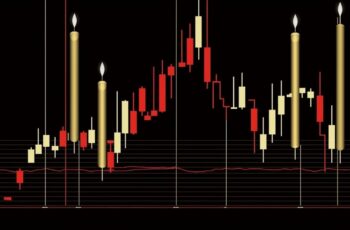Cryptocurrencies are quite volatile compared to traditional investments like stocks and bonds. But there are ways to reduce risk exposure. Choosing established, widely-used cryptocurrencies can provide more stability. Understanding key metrics for evaluating risk is also important. With the right strategy, it’s possible to invest in crypto and minimize high volatility.
The Major Players – Bitcoin and Ethereum
The two largest and most mainstream cryptocurrencies, Bitcoin and Ethereum, are lower risk options due to their prominence and track records.
- Bitcoin is the oldest and largest crypto. It has first mover advantage and brand recognition. These attributes make Bitcoin less prone to major swings in value.
- Ethereum is the second largest crypto with high levels of adoption. It powers many decentralised apps and NFT projects. Upcoming upgrades like “The Merge” should further boost Ethereum’s capabilities and use cases.
Both Bitcoin and Ethereum have stood the test of time and overcome previous crypto market crashes. While no investment is risk free, these major assets have proven resilience.
Alternatives With Upside
While Bitcoin and Ethereum are relatively safe bets, other cryptocurrencies offer more potential for gains. These tend to come with more risk, but can be worth inclusion as part of a balanced portfolio.
Gaming and Meme Coins
Newer cryptocurrencies like ApeCoin and Big Eyes come with higher risk as their futures remain uncertain. However, their ties to promising gaming and metaverse projects provide upside potential. Vibrant online communities also bolster the prospects of these so-called “meme coins”.
Ethereum Ecosystem Coins
Cryptocurrencies built on the Ethereum blockchain benefit from Ethereum’s stability and widespread usage.
- Polygon (MATIC) is a leading Ethereum scaling solution. It aims to make Ethereum transactions faster and cheaper. Polygon has rapidly grown its network and struck deals with major companies like Meta, Disney, and Starbucks. Its integral role in Ethereum’s future reduces risk.
- Avalanche (AVAX) is another smart contract platform with compatibility with Ethereum. Its high transaction speed and low fees make it appealing for decentralized apps and services. Avalanche’s promising technology and growing DeFi ecosystem give it breakout potential.
Metrics to Evaluate Risk
When assessing the risk level of a cryptocurrency, it’s important to look at key metrics:
- Market capitalization and age – Older cryptos with high market caps tend to be less volatile. Bitcoin and Ethereum score well here.
- Use cases – Coins with concrete real-world utility and applications have better long term viability.
- Developer activity – More developers building on a blockchain signals technical robustness.
Maintaining a Balanced Portfolio
To minimize risk in your crypto portfolio:
- Diversify across different assets. Don’t put all your eggs in one basket.
- Limit higher risk assets to a smaller portion, no more than 20% of your portfolio.
- Rebalance your portfolio every 3–6 months as projects and market conditions evolve.
Conclusion
While all cryptocurrencies carry some degree of risk, options like Bitcoin, Ethereum, and Polygon are considered among the most low risk in the current market environment. Carefully evaluating assets using metrics like usage, partnerships, and volatility allows investors to minimize risk. Maintaining a balanced portfolio is also key to reduce exposure to volatility.
FAQs
What is the least risky cryptocurrency?
Bitcoin, as the oldest and largest crypto asset, tends to be the least risky overall.
Should I avoid all high risk cryptos?
Not necessarily, but limit exposure to a small portion of your portfolio. High risk/high reward cryptos can still have a place in moderation.
How often should I rebalance my crypto portfolio?
Aim to reassess your allocations at least every 3–6 months as the market evolves. More frequent rebalancing may be warranted in volatile conditions.
What is a well-balanced crypto portfolio?
A mix of core “blue chip” coins, smaller amounts of higher risk assets, and stablecoins to reduce volatility.
How do I evaluate risk for a new crypto project?
Look at market cap, liquidity, the team, roadmap, usage and partnerships to gauge risk levels.




